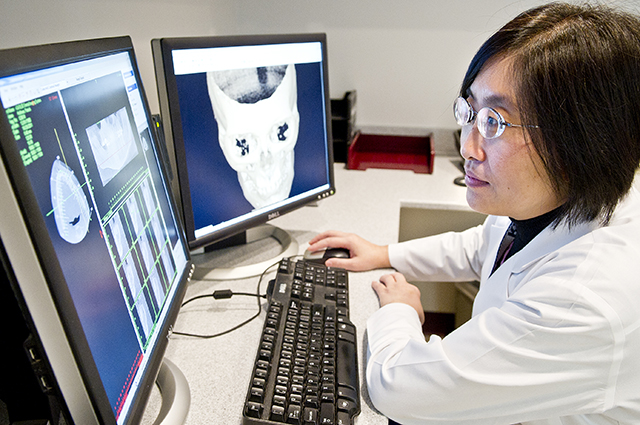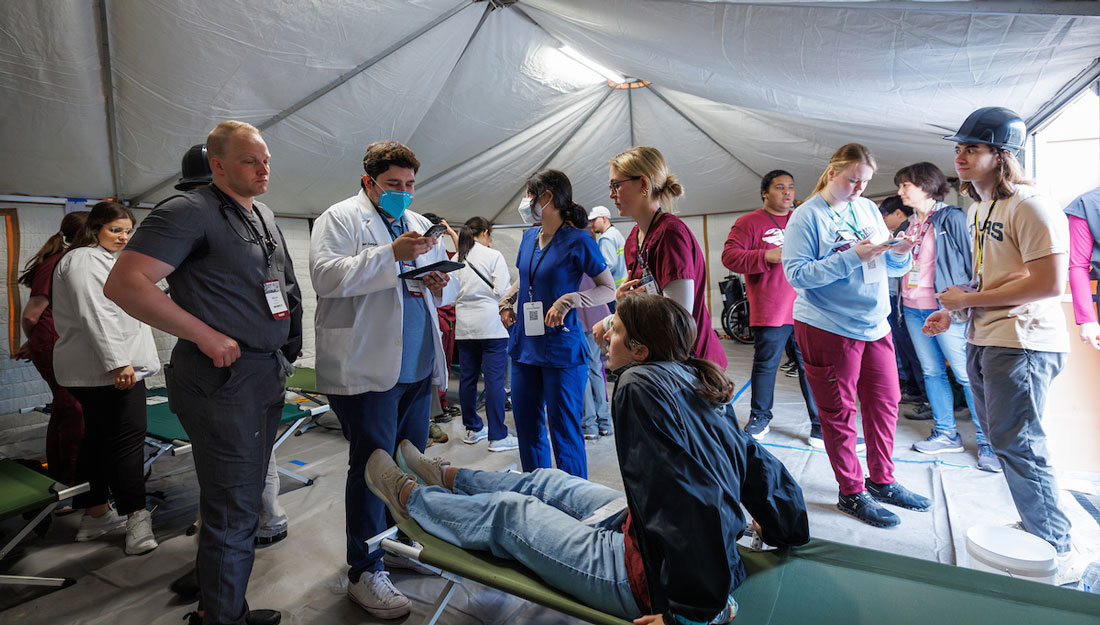New oral and maxillofacial radiology residency to feature interprofessional training with Texas A&M College of Medicine

With approval of a new oral and maxillofacial radiology residency, Texas A&M University Baylor College of Dentistry joins only a handful of dental schools in the U.S. with an advanced education program dedicated to the specialty. The news came on July 31 from the Commission on Dental Accreditation, the agency recognized by the U.S. Department of Education to accredit dental and dentally-related education programs.
 The two-year certificate program will begin in July 2015 with one resident, says Regents Professor Dr. Byron Benson, D.D.S., M.S., and the dental school’s imaging center director, who adds there is potential to add more residents and graduate degree paths.
The two-year certificate program will begin in July 2015 with one resident, says Regents Professor Dr. Byron Benson, D.D.S., M.S., and the dental school’s imaging center director, who adds there is potential to add more residents and graduate degree paths.
One of the hallmarks of the program is interprofessional training with the medical radiology residents at Baylor University Medical Center at Dallas, where residents in both programs will complete radiation physics and biology coursework.
Dr. Michael Opatowsky, M.D., M.B.A., is clinical associate professor of radiology at Texas A&M Health Science Center College of Medicine and instructs the medical radiology residents at the Dallas hospital. He anticipates the benefits of partnering with the dental school to be twofold. TAMBCD residents will leave the program with a better understanding of the interplay between the body, mouth and dental diseases, he says.
Medical radiology residents will benefit, too.
“We are starved for insightful interpretations of our dental-related findings, not having had any formal dental radiology training,” Opatowsky says.
Learning the nuts and bolts of oral and maxillofacial radiology could better equip medical radiologists in the referral process.
“Instead of the generic statement, ‘Formal dental evaluation is needed,’ we could provide a more useful recommendation such as, ‘This patient is in need of endodontal evaluation for radiology findings X, Y and Z,’” Opatowsky says.
The commission’s green light for the program makes TAMBCD’s residency the ninth of its kind in North America and the fourth new program in as many years.
It’s a sign of a shift within oral and maxillofacial radiology, which received American Dental Association recognition as a dental specialty in 1999.
“There is a trend for oral and maxillofacial radiologists to work in private practice as opposed to academic practice,” Benson says. “There are more and more private practice opportunities. This residency will help to fill that gap.”
Media contact: media@tamu.edu


